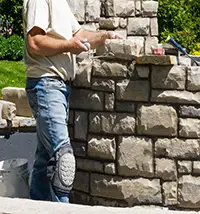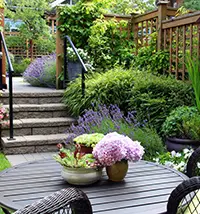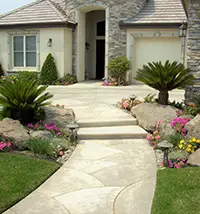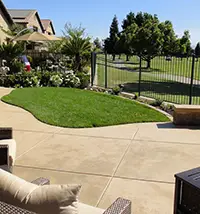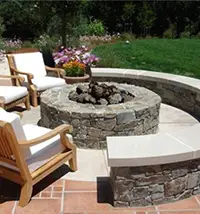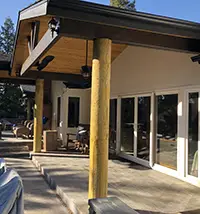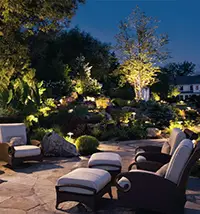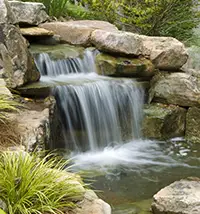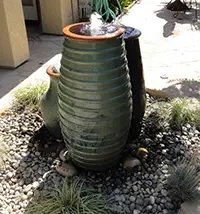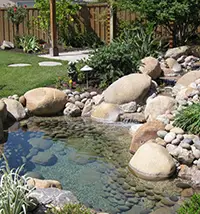Patio Covers, Pergolas, and Arbors FAQ
If you’re a homeowner looking for answers to some of the most common Patio Cover, Pergolas, and Arbors FAQ (frequently asked questions), you’re in the right spot. We hope you’ll find what you need here.
Mike’s Evergreen has been a family owned and operated landscape business serving Fresno and Clovis since 1987, and we’ve answered quite a few questions in that time. So if you don’t find the answer to your specific question here, we invite you to contact us directly.
Here are some of those most frequently asked questions about patio covers, pergolas, and arbors:
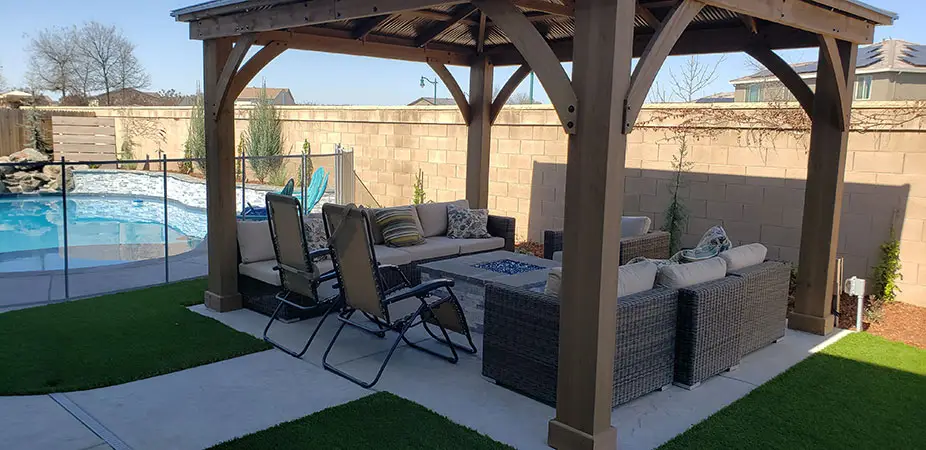
What kind of patio cover is best?
The kind of patio cover that is best for you is one that meets all of your needs and preferences as far as aesthetics, upkeep, and budget. There are so many options — for example, freestanding vs. attached, solid vs. slatted, shingled to match the home’s roof or not — that it’s virtually impossible to pick just one as being the best across the board.
This is why it’s so important to work with a professional Central Valley patio design team. They can help you figure out what kind of patio cover is best for your property, needs, and budget.
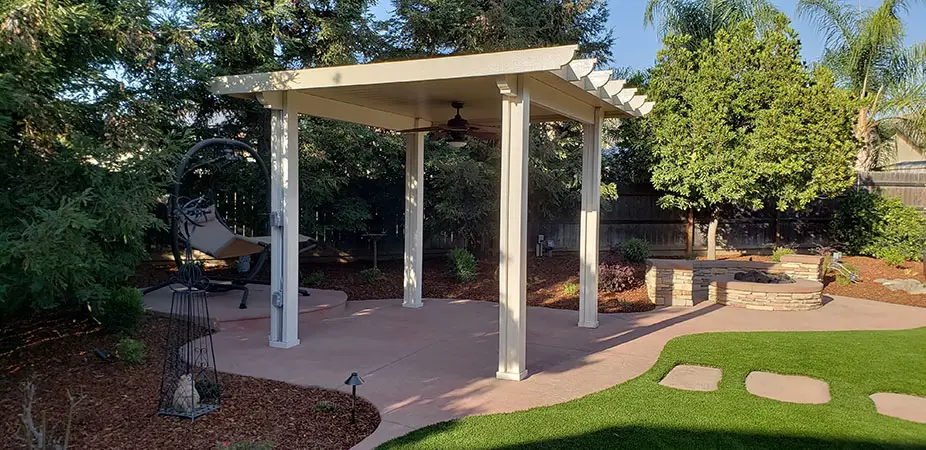
How much value does a covered patio add to your home?
A patio installation brings comfort and lifestyle value to you and your family, and it also adds monetary value to your home. According to a recent HomeLight survey of top real estate experts, covered patios bring an average of 109% return on investment in added value.
That means if you invest $3,000 in a covered patio, you can expect to see about a $3,270 increase in your home value. Of course this is a general average, and your return on investment may vary depending on numerous factors.
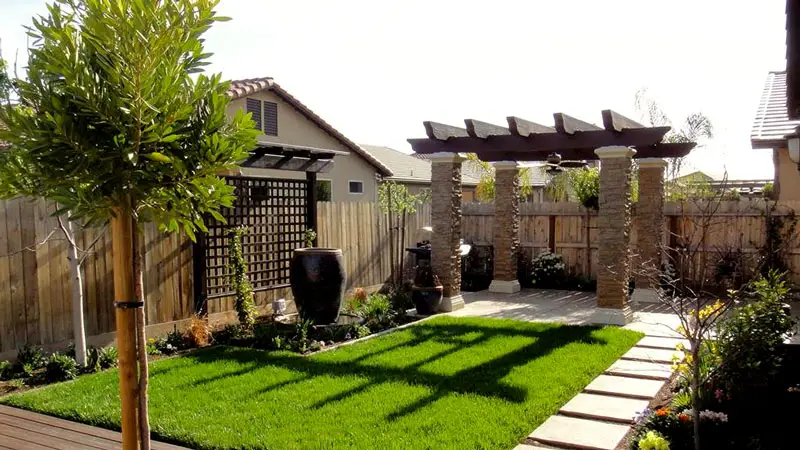
How big should my patio cover be?
The size of your patio cover is best determined by what will be on the patio. For example, what kind of furniture will you place there? Are you incorporating an outdoor kitchen or outdoor fireplace? Any potted plants?
You want your patio to feel comfortable, but if it’s too big in proportion to what you’re using it for, you lose some of the intimacy. Too small, and it feels cramped and crowded.
It’s often helpful to get the advice of patio design experts when planning how big your patio cover should be.
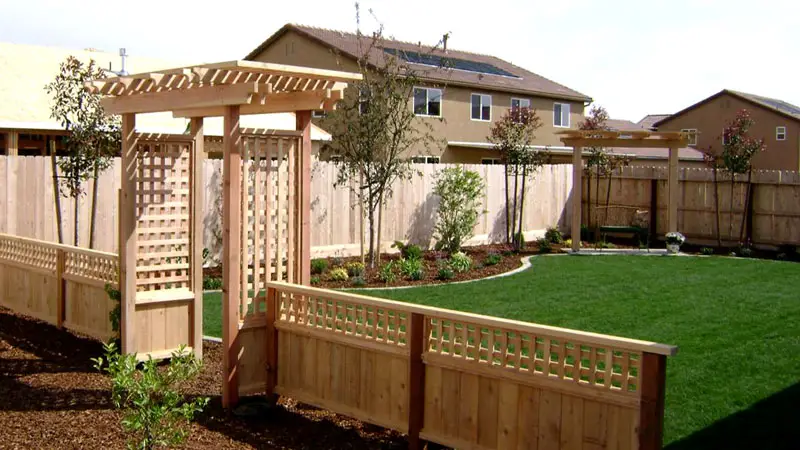
Do I need a permit to build a patio cover in California?
Whether or not you need a permit to build a patio cover in California depends on a few details of the patio cover that you’re building.
Here are a few guidelines:
- If it attaches to the home, yes, you need a permit.
- If it is free-standing structure and larger than 120 square feet, yes, you need a permit.
- If it is free-standing structure and less than 120 square feet, no, you may not need a permit.
Permit regulations may be updated and changed at any time, so it’s always best to seek the advice of a licensed patio contractor to be sure you’re covered.
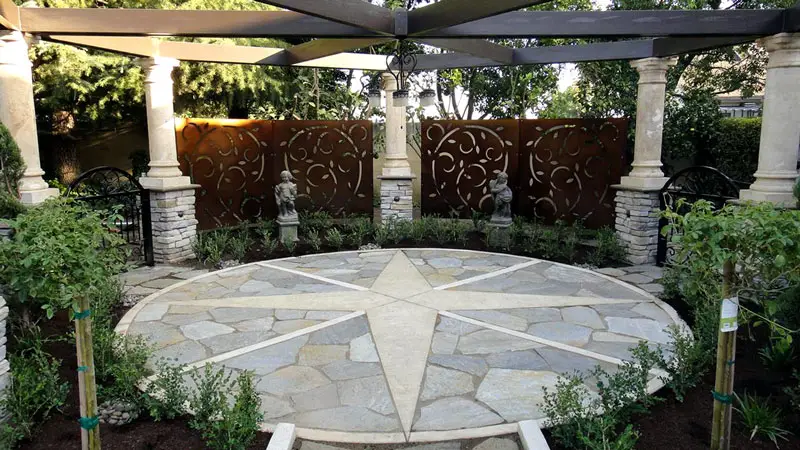
How do you measure for a patio cover?
Measuring for a new patio cover is more complex than it may seem, especially if you’re having it custom built. For example, you need to measure not just the horizontal space you want to cover but also the vertical height that the patio cover will be installed at. There are additional things like pitch and overhang to account for as well.
Accuracy of measurements is crucial, which is why patio cover measurements must be taken by experienced patio designers or builders.
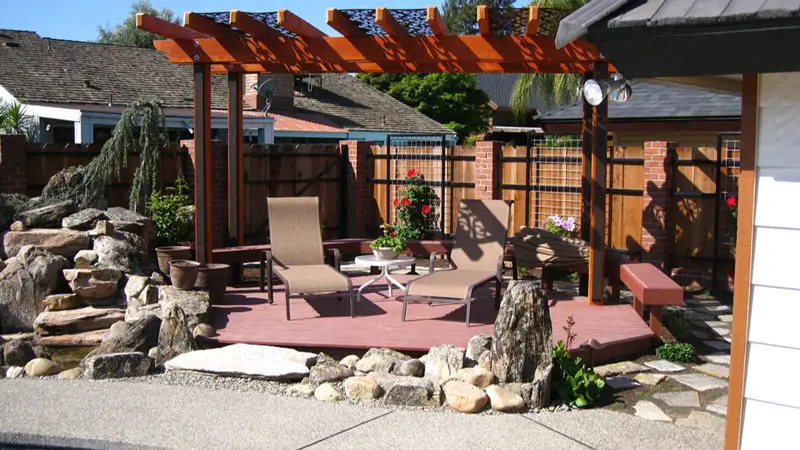
Do arbors provide shade?
Yes, arbors provide shade to your outdoor patio. Although, because the top of an arbor is typically made from slats and not a solid roof, it’s not a solid shade that’s created. One way to increase the amount of shade provided by an arbor is with climbing plants or other plants that can be supported by the structure of the arbor. Adding lattice or a trellis to the sides of an arbor also can increase the amount of shade created to protect you from sunny days.
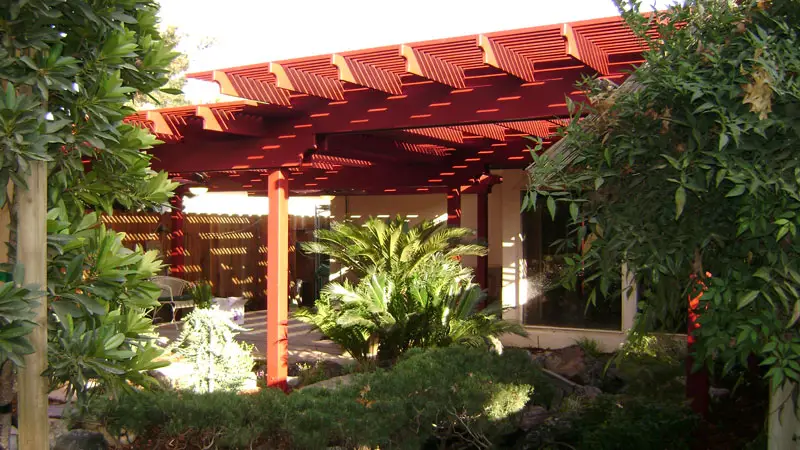
How long do arbors last?
The question about how long do arbors last is one of those “it depends” situations. It depends on:
- What materials the arbor was built with
- How the arbor is secured to the ground
- The quality of the craftsmanship
- The weather conditions
- The maintenance it receives
The best arbors blend aesthetic beauty with practical, long-lasting sturdiness. And the easiest way to get the best of both of these worlds is to get the help of local experts who know the appropriate building materials for your local climate and who can make the functional also pleasing to the eye.
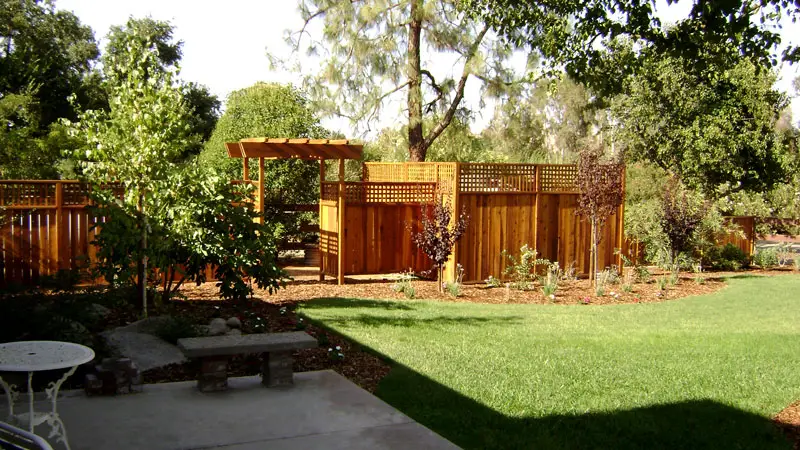
What can grow on an arbor?
The best plants to grow on a garden arbor are those that naturally want to climb the garden structure. Good flower choices to grow on an arbor include jasmine, honeysuckle, climbing roses, jessamine, clematis, morning glory, and moonflower. It’s also a good idea to consider climbing plants that will bloom year-round for you like wisteria, perennial sweet peas, chocolate vines, and climbing hydrangea.
But flowers aren’t the only things that can grow on an arbor. You can also consider things like ivy and Virginia creeper, or even vegetables that like to climb such as cucumbers, beans, and cherry tomatoes (although vegetables would have to be planted each year).
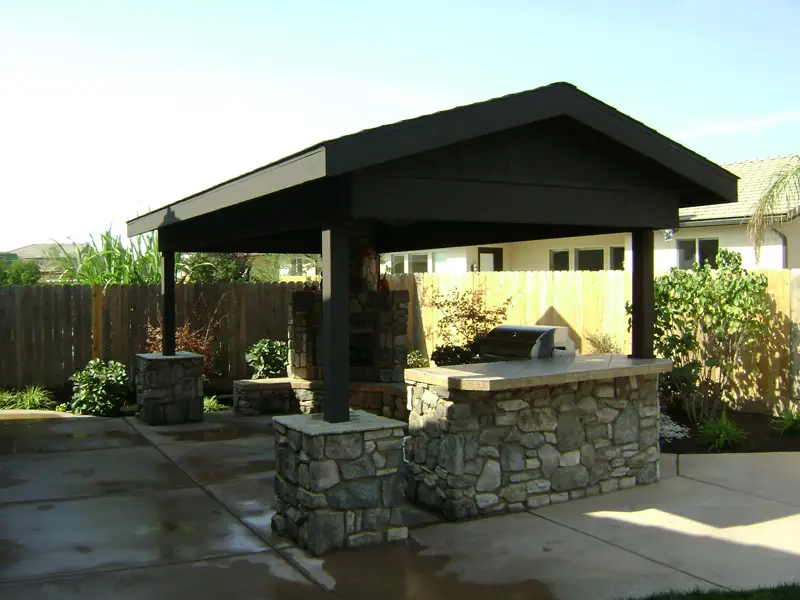
How do I secure my arbor in the ground?
The vertical support posts of the arbor need to be secured to the ground for safety and security. This is perhaps best done using concrete footers or by filling the post holes with freeform concrete. There are other options for securing an arbor to the ground, but you should seek the advice of an experienced professional to determine if another method is appropriate in your situation (based on the materials used, your ground conditions, weather, etc.) Don’t try to DIY your supports.
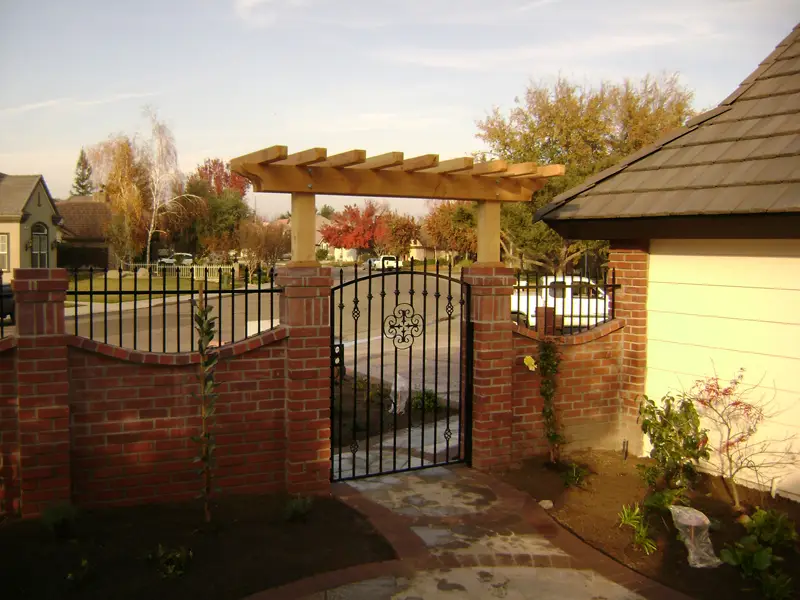
How much do arbors cost?
There are many factors affecting the cost of an arbor. For example, size, materials, and complexity of the design all play a part. In general, though, you can expect to spend anywhere from a few hundred dollars to a few thousand dollars for materials and installation of an arbor.
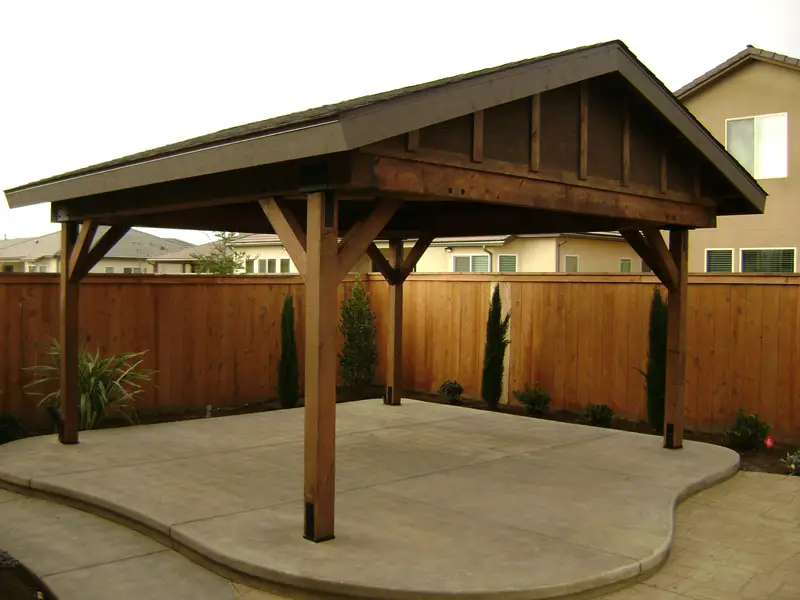
What is the difference between an arbor, a pergola, and a gazebo?
The main difference between an arbor and a pergola is size. An arbor is meant to be walked through and is often placed to serve as a transition or an entry to a certain area in your yard. Arbors can be placed on paths and walkways, or they can be placed in strategic focal points to create a distinction between areas of the yard. Gazebos are also considered arbors but are usually larger in size. Pergolas are larger and meant to define and shade an outdoor living space. Freestanding pergolas can be placed on patios or in other open areas of your yard where you want to enjoy an outdoor living space.
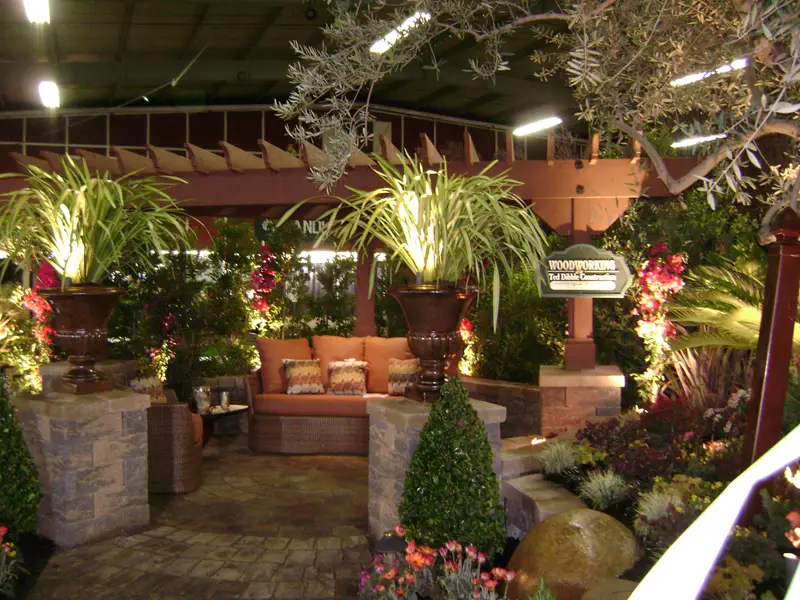
What is a patio arbor?
A patio arbor is an arbor that provides shade and adds aesthetics to a patio. It is typically (although not always) connected to a building on one side and can be used to define a certain area of a large patio.
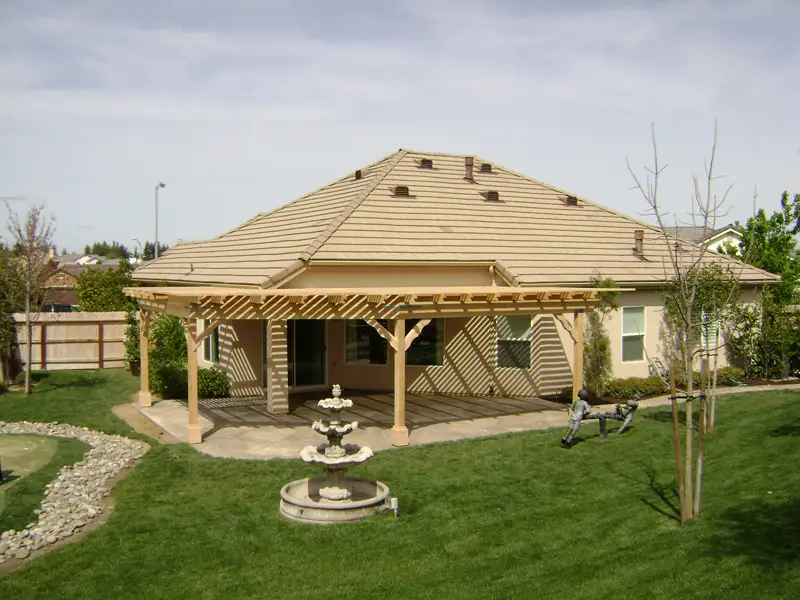
What are the benefits of a pergola?
Some of the benefits of a pergola include more enjoyment of your backyard, increased defined outdoor living space, and added value to your home. A pergola allows you to spend more time outside. Additionally, pergolas are fairly quick and easy to build, and they don’t require a permit if less than 120 square feet.
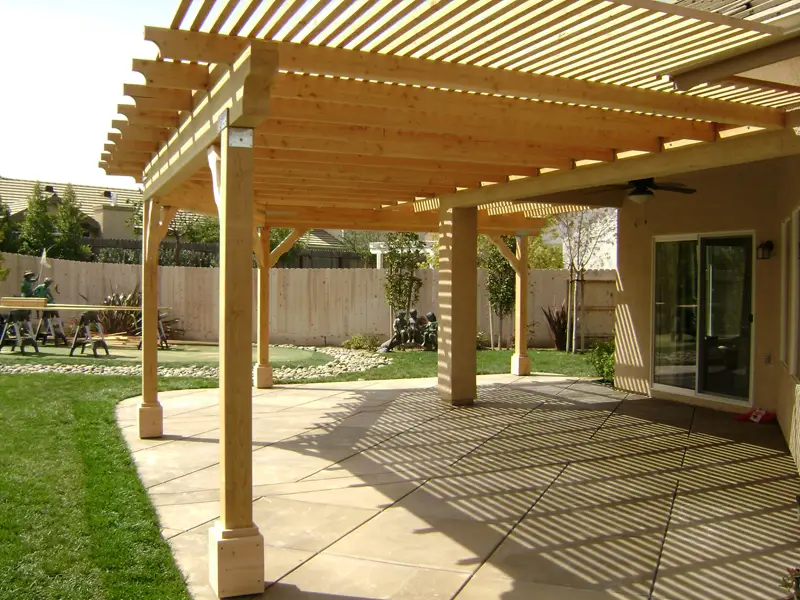
How long will a pergola last?
The estimated life span for a pergola depends on the quality of materials used, quality of workmanship in doing the construction and installation, and also how it’s maintained. You can increase the length of time that your pergola will last by having it built by outdoor living experts who use high-quality products, and understand the local weather conditions and how they impact outdoor structures.
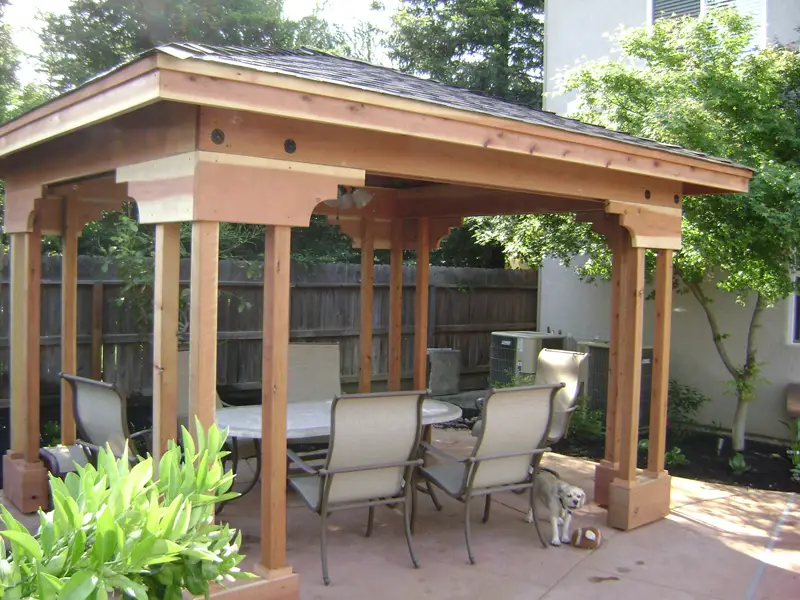
Do pergolas provide good shade?
Yes, pergolas provide good shade. Although that shade is a diffused shade instead of solid because the top of an arbor is typically a slatted roof instead of solid. A common way to increase the shade provided by a pergola is with climbing vines or other plants that can be trained to grow up onto that slatted roof to create a “living ceiling” for your outdoor living space.
Why Choose Mike’s Evergreen
Mike’s Evergreen is the right choice for your patio cover, pergola, or arbor needs because we are the Valley’s premier outdoor living experts. We work hard to understand your goals and provide quality results that will exceed your expectations. We understand that one of your biggest and most important investments is your home or business. Your objectives, lifestyle, personality, as well as the specific needs of your property are carefully considered to reflect a landscape that will provide beauty, function, and value to your home or property. Mike’s Evergreen offers a complete range of landscape services so we can make your yard look the way you intend it to.
Enhance your Landscape with Our Expertise
Construction
Landscape Construction projects are permanent to semi-permanent installations and should be considered an investment in your home.
Outdoor Living
Custom designed outdoor living areas allow you to have a beautiful and functional living space to entertain and enjoy with family and friends.
Custom Concrete
Brighten up your landscape with a custom colored or stamped designed concrete path, driveway or patio.
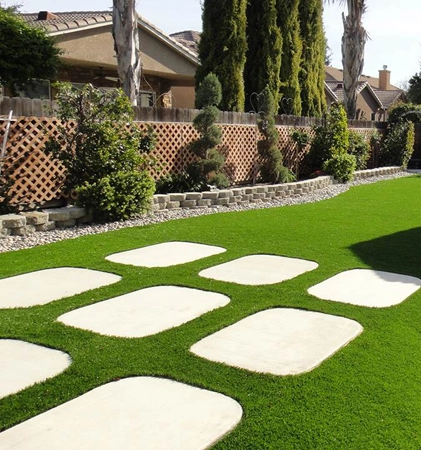
Pavers & Flagstone
Typically installed as an alternative to concrete, pavers and flagstone come in many shapes, sizes and patterns.
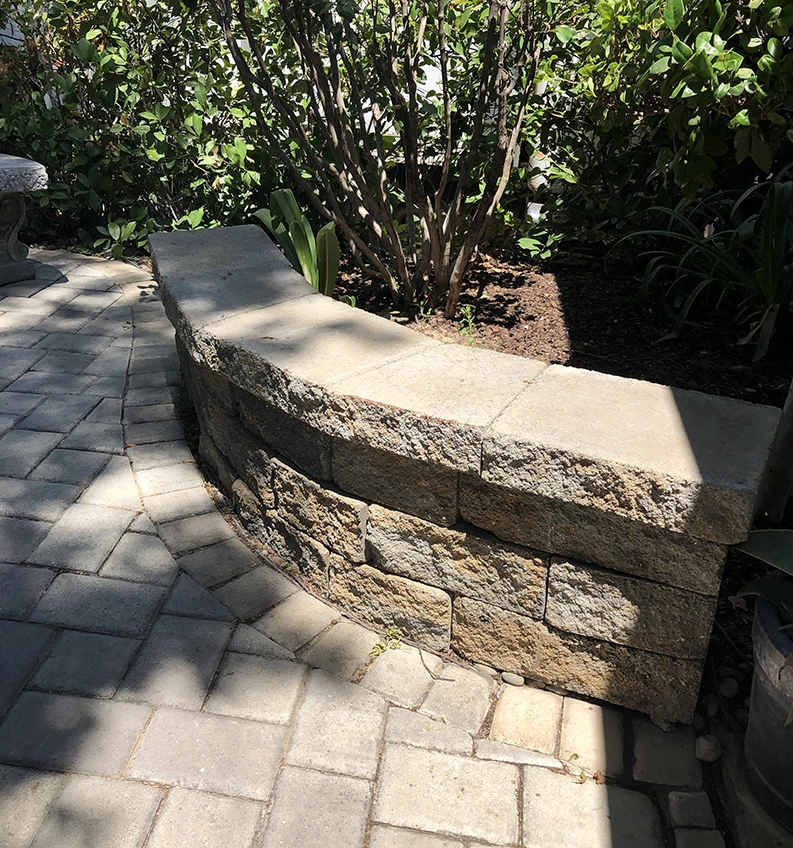
Retaining Walls
Landscape retaining walls are utilized to increase usable space, provide additional elevations, seating, and planting areas.
Fire Pits & Fireplaces
Fire Pits and Fireplaces are both structures that provide a visual focal point while giving off warmth and light.
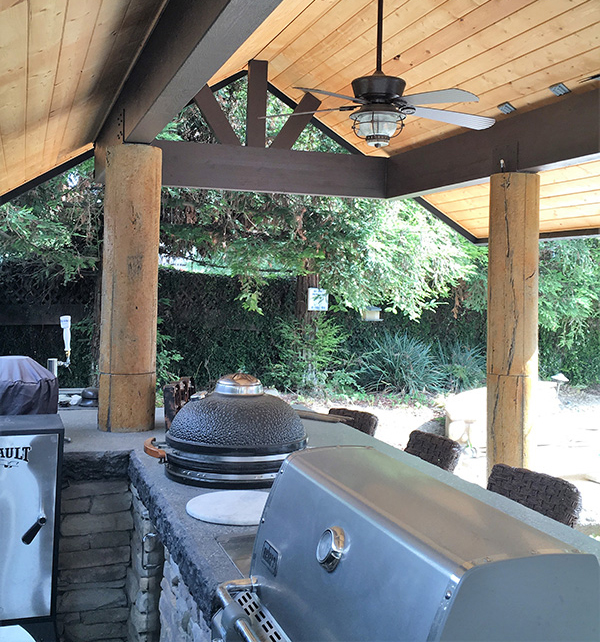
Outdoor Kitchens
Take your entertaining to the next level with the ideal outdoor setting for you and your guests.
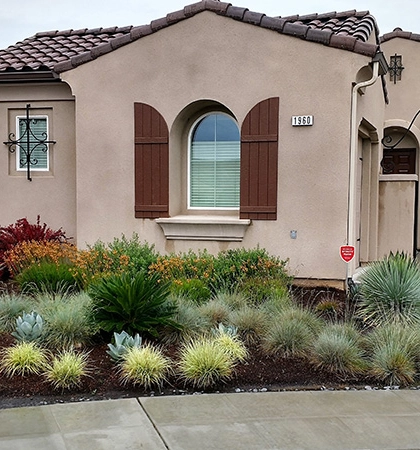
Drought Resistant & Xeriscape
Is your idea of a drought-tolerant landscape rocks and cactus? Think again!
We can design your yard to save water with a drought-tolerant or xeriscape landscape. We can create an entertainment area with hardscape and colorful pots with plants/flowers supplied with drip irrigation. You could have a serene area with a fountain that re-circulates the water. We pick plants that are adapted to our climate and can thrive with low water and low maintenance. Even with our current drought, you don’t have to stop using your front or back yard.
Water Features
Mike’s Evergreen can install a variety of water features for your home. From ponds and waterfalls to fountains and bubbling pots.
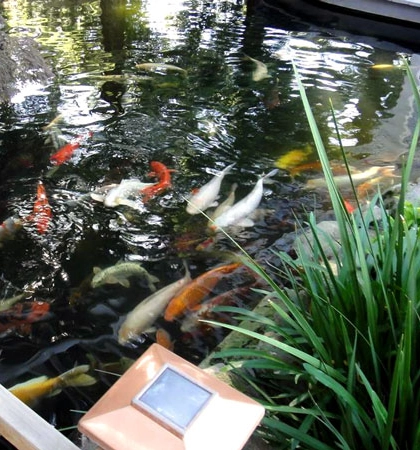
Koi Ponds
Mike’s Evergreen can design the perfect Koi pond for your yard, whether you have a small space or a large space, there is a pond for you.
Sprinkler Repairs
Broken Pipes and Leaks – We’ll fix a geyser or muddy spot in the yard.
Timer/Controller Adjustment – We’ll adjust your timer to keep your yard green and avoid over-watering.
Sprinkler Heads Repaired – We’ll get each sprinkler set just right and replace any broken ones.
Drip Irrigation – We’ll check your entire system to ensure it works properly and fix any issues.
Your Vision Our Design
Your project will seamlessly go from the design stage to completion. 3D design is an effective tool for you because you can see your project before we even break ground. It just makes sense to have an actual Landscape Contractor do the design, as we will also be the builder and are better equipped to understand your budget versus labor and material costs and what is realistic.
Landscaping Tips
Revitalize Your Lawn through Aeration.
By creating hundreds of little holes in your lawn’s surface, allows for rain water and nutrients to more quickly penetrate the surface of the lawn. This also feeds the roots of your plants and grass. By aerating your lawn, you’ll help prevent the soil from becoming compact, which allows the root systems of your lawn to grow deeper. Aeration occurs when you use a tool specifically designed for aerating your lawn. It is a tool with little spikes that puncture your lawn as you roll it across your yard. The little puncture marks provide fresh air to penetrate to the root system of your turf.
Your lawn will stay looking more beautiful and healthy if you aerate it.
How to Prune Rose Bushes
- Use clean, sharp tools.
- Look at the overall plant, but begin pruning from the base of the plant.
- Prune to open the center of the plant to add light and air circulation.
- Make your cuts at a 45-degree angle, about 1/4 inch above a bud that is facing toward the outside of the plant.
- Ensure it is a clean cut (not ragged).
- Remove all broken, dead, dying or diseased wood (any branches that look dry, shriveled or black). Cut until the inside of the cane is white.
- Prune any weak or twiggy branches thinner than a pencil.
- Remove sucker growth below the graft.
- Trim any remaining foliage.
There are certain things a tree owner must know to keep trees healthy and in the very best condition. Here are just a few:
Limit Staking Your Tree
Tree staking is never done with the intention of harming a tree. Staking is usually done with love and with a desire to promote root and trunk growth and protect a young tree from harm.
What some tree planters do not understand is, rather than helping a tree develop root and trunk growth, improper tree staking replaces a supportive trunk and root system with an artificial support that causes the tree to put its resources into growing taller but not growing wider.
Protect a Tree’s CRZ
Before starting a mulching project, become familiar with the critical root zone (CRZ) or tree protection zone. This zone is generally defined as the area under a tree and out to its drip line. Improving conditions in this protection zone will also result in major health benefits to a tree.
Mulch Your Tree
Mulching is the most beneficial thing a home owner can do for the health of a young tree. Mulches are materials placed on the soil surface to improve soil structure, oxygen levels, temperature, and moisture availability.
Fertilize Your Tree
Ideally, growing trees should be fertilized throughout the year. The greatest amounts should be applied during the early spring and summer months. Several light applications a year are preferred as the tree gets older.
Prune Your Tree
Pruning is essential in developing a tree with a strong structure and desirable form.
Storm Proof Your Tree
A tree is never in greater danger than during a storm. That can mean a threat from pounding rain and hail, from the fury of the wind or the scorch of lightning. You may also have to remove a tree that endangers life and property during or after a storm.
Winterize Your Tree
Trees in Fall are beginning their dormant phase. Some trees may seem to be inactive but the fact is they need to be winterized – protected and cared for to remain healthy and free from diseases and insects.
Prepare Your Landscape for Spring
After the last cold snap, it’s time to clean up all the accumulated debris from your lawn. You want to help your landscape get off to a healthy start by doing the following:
- Remove all leaves and other plant debris such as sticks and dead plants.
- Aerate damaged areas by turning over dirt and removing plugs of dirt.
- Mow the lawn about 30 percent shorter than you would normally.
- Apply seed or starter fertilizer according to manufacturer instructions.
- Cover all patches with peat moss or mulch.
- Thoroughly water your lawn and keep it consistently moist for two to four weeks.
- Fertilize again after four weeks.
Freezing temperatures can be damaging to a landscape. There are a few things you can do to help keep your landscape protected, even in harsh winters.
The key is to remove debris, leaves, pine needles and unwanted branches from around your landscape. If these items are not removed, they can contribute to rot and mold along with other lawn diseases. By removing them, you’re leaving plenty of room for new growth that will contribute to a healthy landscape in the spring.
It is also very important to keep your lawn weeded regularly. You can weed by hand or by applying herbicides so that your turf has plenty of room for growth.
Winter is the perfect time to aerate and de-thatch your turf. During summer months, it gets packed down and tangled. Aerating will help open up your turf to fresh air, water and nutrients that are imperative for healthy growth.
Protect your lawn from freeze damage by doing the following before a freeze:
Water Your Lawn
Thoroughly water your landscape plants before a freeze. This can help reduce any change in your plants caused by freeze damage. Cold and dry winds often accompany cold weather, which can dry out plants. By watering your plants, you will help retain moisture. Wetting the foliage of plants before a freeze does not, however, provide any cold protection. A well-watered soil will also absorb more solar radiation than dry soil and will re-radiate the heat during the night.
Move Plants Inside
If possible you’ll want to move all your plants, in containers, inside your home, where the temperatures will stay above freezing. If it’s not possible to bring them inside, try to place them close to the base of your home to help keep them as warm as possible during a freeze. Covering your plants in plastic can also help keep them from getting freeze damage. If you move your plants inside, make sure you give them as much light as possible, so they can continue to grow.
Mulch
Mulch can help protect plants that are in ground. Using dry material like pine or straw will help keep moisture in. You should be aware that mulches will only protect what they cover. Mulch at the base of a bird-of-paradise will help the roots, but will provide no added protection to the leaves. Mulches, then, are best used to protect below-ground parts or crowns or may be used to completely cover low-growing plants to a depth of four inches. Leave cover on no more than three or four days.
Cover
Do your best to cover any outside plants with plastic or cardboard boxes. Styrofoam boxes also help with insulation. You want to cover them the best you can to avoid freeze damage.
Proper Care of plants in the cold winter includes making sure you do a deciduous perennial cut back. This allows the perennials to focus on the growth necessary in early spring to maximize the foliage and blooms throughout the year. Without proper care and attention, perennials will have to fight through the old growth in the spring time. You want to cut them back, so they have plenty of room to flourish. Unfortunately, winter perennial cut back are often overlooked. Make time and effort to cut back your perennials. You’ll be able to see a noticeable difference during their peak season.
There’s no better way to get into the holiday spirit than to decorate your home with beautiful poinsettias. The scientific term for poinsettias is: Euphorbia Pulcherrima. Introduced in the United States by Joel Roberts Poinsett (who fell in love with the plant called flor de noche Buena – while U.S. ambassador to Mexico in 1828 and began growing and giving them out as gifts in his home state of South Carolina), they make up 85% of potted plant sales during the holiday season.
Poinsettias are commercially grown in every state, with California the top producer, and though they come in other colors such as white, pink, orange, pale green and cream, red is the most popular and preferred. They can grow to be several feet in height and bear dark green leaves that measure three to six inches in length. To acquire color, it must be left in the dark for 12 hours at a time; at the same time, the plant needs much light during the day to reach a bright color.
They are a perennial, tropical (non-tolerant to freeze, which means you must bring them in when it gets too cold) shrub that exudes holiday cheer with their vibrant and festive colors. Whether adding to your courtyard design outside or livening up your foyer to greet family, friends and guests inside, poinsettias are perfect for the holiday season.
There are three main benefits for pruning (also known as tree trimming or tree cutting) your trees:
- Personal safety
- Health of the tree
- Tree appearance
It is often recommended for personal and property safety reasons to reduce the risk of falling limbs and branches. In addition it is important to remove branches that may be resting on utility lines or near rooftops.
For the trees overall health, proper tree pruning helps stimulate new growth and the healing of wounds. It is necessary for the continued health of the tree to remove dead, weakened, diseased and insect-infested limbs. It can also encourage greater fruit production.
And finally, it improves the appearance of trees in your landscape. This is not only beneficial for the look of your property, but can also increase the overall value! Limbs too close to rooftops can encourage moss and other fungi to grow and reduce the life of the roof. They can also allow various tree climbing animals’ access to your roof and potentially your home.
Winter Rye grass is an annual grass that lives for one season and dies out. This type of grass is useful for creating a green lawn in the winter by over seeding an existing lawn. The nice thing about Rye Grass is that it can be mixed with other seed types such as Bermuda for winter hydro seeding. The Rye will come up immediately while the warm season seed remains dormant until spring. By the time the Rye Grass dies out, the warm season grass will be well established, ideally leaving your lawn looking green year around.
Rye grass is also a great choice to help with erosion control because it establishes itself quickly. Although it’s annual, it can reseed itself naturally to produce new turf each fall, if it is well maintained. It usually takes about 3 weeks for winter rye grass to establish itself.
Mulching can be one of the most beneficial things you can do for your soil and your plants. If you have not considered mulching your garden in the past, you may want to reconsider.
The main reason for mulch is to retain moisture in the soil. A three inch layer of mulch will reduce evaporation and lessen your watering time. Mulch protects soil from baking and drying out by altering the soil temperature and serving as an insulator to accommodate the surface needs in both the summer and winter seasons. Mulch also prevents soil crusting by allowing water to penetrate into the soil for absorption and movement. Consistent moisture fosters healthy plant growth.
Another benefit of mulch is weed reduction. A layer of mulch will help prevent the germination of many weed seeds, reducing the need for cultivation or the use of herbicides. Weed seedlings will smother before they are tall enough to peek through the mulch. Weeds use up water and nutrients intended for your plants. A weed free garden is lush with the proper plants. If weeds are allowed to grow, they will choke out what you have spent so much time and energy designing and planting.
While there are many types of mulch, organic mulches such as wood chips, grass clippings or other locally available materials help improve the soil by adding organic matter as they decompose. They also may encourage the growth of worms and other beneficial soil organisms that can help improve soil structure and the availability of nutrients for plants.
Mulches can also be used to enhance the look of your property. Many bark mulches provide uniformly rich brown color that contrasts with the plants. The mulch helps keep plants clean by reducing the splash of soil onto leaves during rainstorms, and helps infiltration of the rainfall into the garden.
In summary, the main reasons to use mulch are:
- Helps maintain even soil temperature in the roots by keeping them cool in the summer and warm in the winter.
- Promotes plant growth.
- Controls weeds.
- Conserves soil moisture, meaning you use less water.
- Improves soil structure and quality over the root area.
- Protects from mechanical damage (Mowers, string trimmers, etc.)
- Helps beautify your plantings.

